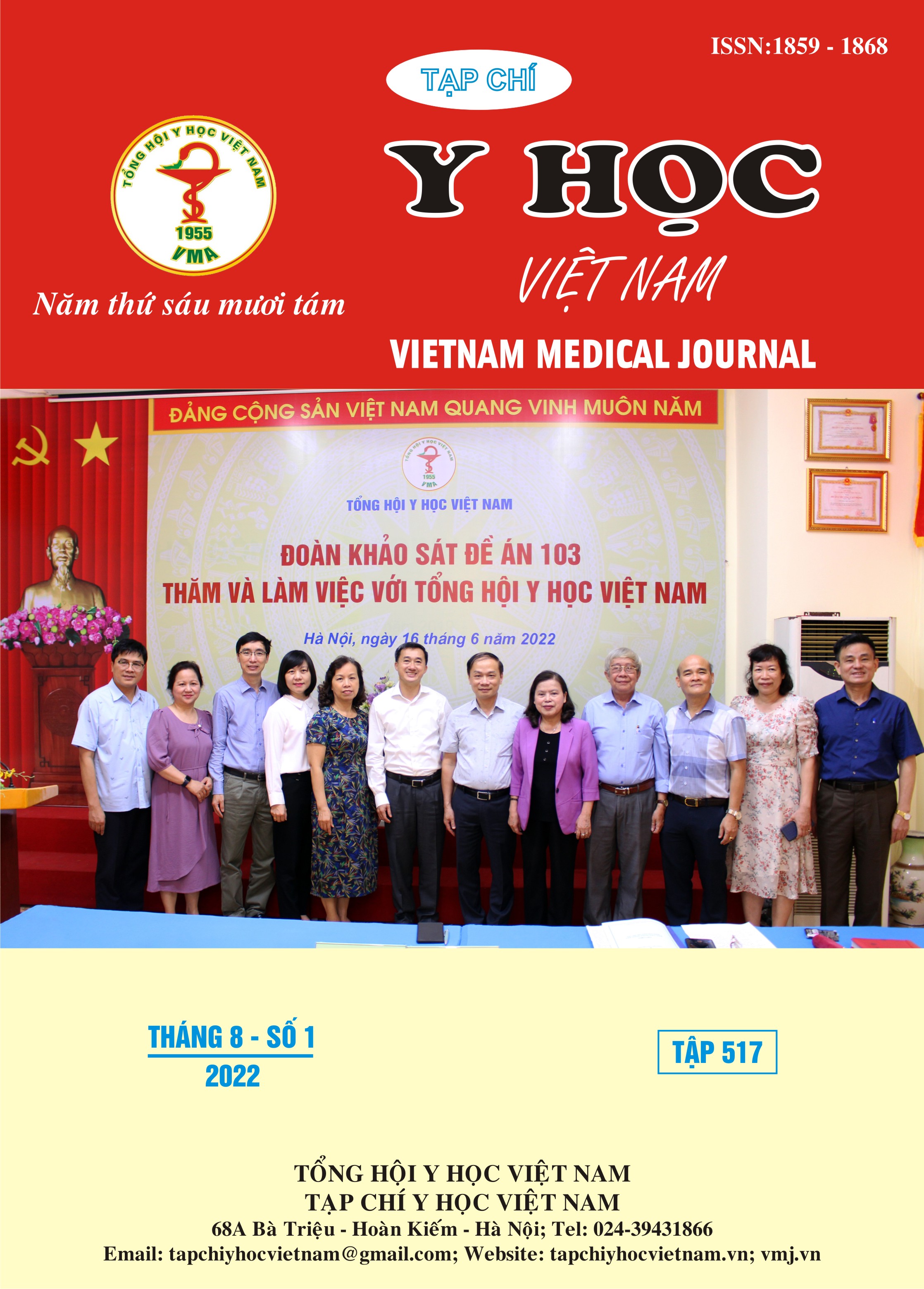INDUCTION TREATMENT OUTCOME OF NEWLY DIAGNOSED ESSENTIAL THROMBOCYTHEMIA PATIENTS IN NATIONAL INSTITUTE OF HEMATOLOGY AND BLOOD TRANSFUSION
Main Article Content
Abstract
Objective: to study some of clinical, laboratory features and induction treatment results of newly diagnosed Essential thrombocythemia patients in National Institute of Hematology and Blood Transfusion. Patients and methods: 115 newly diagnosed and untreated patients with Essential thrombocythemia according to WHO 2008 criteria from January 2018 to December 2019 in National Institute of Hematology and Blood Transfusion. Results and conclusion: median age at diagnosis was 56, female accounted for more than male, 16.1% of patients had history or manifestation of thrombosis at the time of diagnosis, 33.9% of patients were in high-risk group according to revised IPSET thrombosis; median platelet count was 1264 G/l; JAK2 V617F, CALR and MPL mutation were 55.7%, 19.1% and 2.6%, respectively. After induction treatment, 100% of patients had at least partial response, of which, 10.4% of patients achieved a complete response.
Article Details
Keywords
Essential thrombocythemia, Myeloproliferative neoplasms, JAK2 V617F, CALR, MPL
References
2. Barbui, T., et al. (2015). Practice-relevant revision of IPSET-thrombosis based on 1019 patients with WHO-defined essential thrombocythemia. Blood Cancer J, 5, e369.
3. Barbui, T., et al. (2011). Philadelphia-negative classical myeloproliferative neoplasms: critical concepts and management recommendations from European LeukemiaNet. J Clin Oncol, 29, 761-70.
4. Kim, S.Y., et al. (2015). CALR, JAK2, and MPL mutation profiles in patients with four different subtypes of myeloproliferative neoplasms: primary myelofibrosis, essential thrombocythemia, polycythemia vera, and myeloproliferative neoplasm, unclassifiable. Am J Clin Pathol, 143, 635-44.
5. Szuber, N., et al. (2019). 3023 Mayo Clinic Patients With Myeloproliferative Neoplasms: Risk-Stratified Comparison of Survival and Outcomes Data Among Disease Subgroups. Mayo Clin Proc, 94, 599-610.
6. Vu, H.A., et al. (2019). Clinical and Hematological Relevance of JAK2V617F, CALR, and MPL Mutations in Vietnamese Patients with Essential Thrombocythemia. Asian Pac J Cancer Prev, 20, 2775-2780.
7. Carobbio, A., et al. (2010). Hydroxyurea in essential thrombocythemia: rate and clinical relevance of responses by European LeukemiaNet criteria. Blood, 116, 1051-5.


